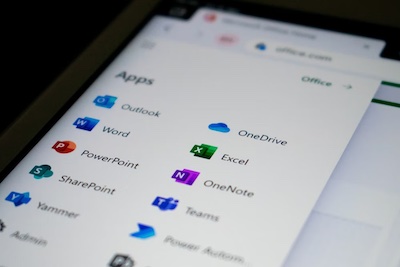 Microsoft Visio is a diagramming software application that uses dynamic graphics to visually express data. It’s most commonly used in business process engineering and management, but it also has many uses in Information Technology (IT) departments. If you are working with Google Sheets, there are several ways you can use Visio to create more dynamic visuals for your data. Visio can be used as a secondary program for creating visualizations within Google Sheets or as the primary program for creating visualizations from Google Sheets. The following sections discuss some of the pros and cons of using these two programs together, as well as some helpful tips about how to use them together effectively.
Microsoft Visio is a diagramming software application that uses dynamic graphics to visually express data. It’s most commonly used in business process engineering and management, but it also has many uses in Information Technology (IT) departments. If you are working with Google Sheets, there are several ways you can use Visio to create more dynamic visuals for your data. Visio can be used as a secondary program for creating visualizations within Google Sheets or as the primary program for creating visualizations from Google Sheets. The following sections discuss some of the pros and cons of using these two programs together, as well as some helpful tips about how to use them together effectively.
Create a Network Diagram in Visio
Network diagrams are often used to visualize relationships between individual pieces of data, people, or systems. They are a type of Visio diagram that allows connections to be drawn between nodes. These nodes can then be formatted to display information about the relationship on the node itself. Network diagrams are a great way to visualize relationships between different parts of your business or IT system visually, so it makes sense to use them along with Google Sheets data. This can be done by creating the network diagram in Visio and then using it as a source for the visualizations in Google Sheets.
Import Data from Google Sheets to Visio
There are a couple of ways to do this, but they will all require connecting the two programs. The first step will be to make sure that they are connected and that you can see both programs on the same screen. You can do this by either downloading the desktop version of Google Sheets or using the online version. Then, bring up Visio and open the connection settings by clicking File > Options > Connections > Manage Connections. Click on the “Google Sheets” option to add it to the diagram. When you do this, you should see both programs appear on the same screen. Now, you can use either of the following methods:
Create a Visio Chart From Data in Google Sheets
V Isio charts are visualizations that show data on both the x and y-axis of a chart. They are great for showing performance metrics, financial data, or other graphs that require multiple axes. These charts can be created from Google Sheets data by following these steps: - Open the connection settings pane in Visio. - Click on the “Google Sheets” option. - Select the Google Sheets workbook that you want to link to. - Select the specific cell that you want to turn into a chart. - Select the “Chart” option.
Create a Process Flow Diagram in Visio
Process flow diagrams are visual representations of how a process works. They usually include a representation of the various pieces of data that are used in the process. This makes them an excellent tool for visualizing the steps of a process, like the hiring process or the steps in a software development lifecycle. These diagrams can be created from Google Sheets data by following these steps: - Open the connection settings pane in Visio. - Click on the “Google Sheets” option. - Select the Google Sheets workbook that you want to link to. - Select the specific cell that you want to turn into a diagram. - Select the “Diagram” option.
Conclusion
Google Sheets and Visio can both be used to create visualizations for data, but they are programs that are used for different purposes. Google Sheets is a spreadsheet application that can be used to create charts, graphs, or tables with data. It’s usually used as a secondary program to create visuals that are meant to be included in the documentation. Visio is a diagramming software application that uses dynamic graphics to visually express data. It’s most commonly used in business process engineering and management, but it also has many uses in Information Technology (IT) departments. If you are using Google Sheets and Visio together, it is best to use them for different purposes. This will make it easier to use both programs to create visualizations when needed.